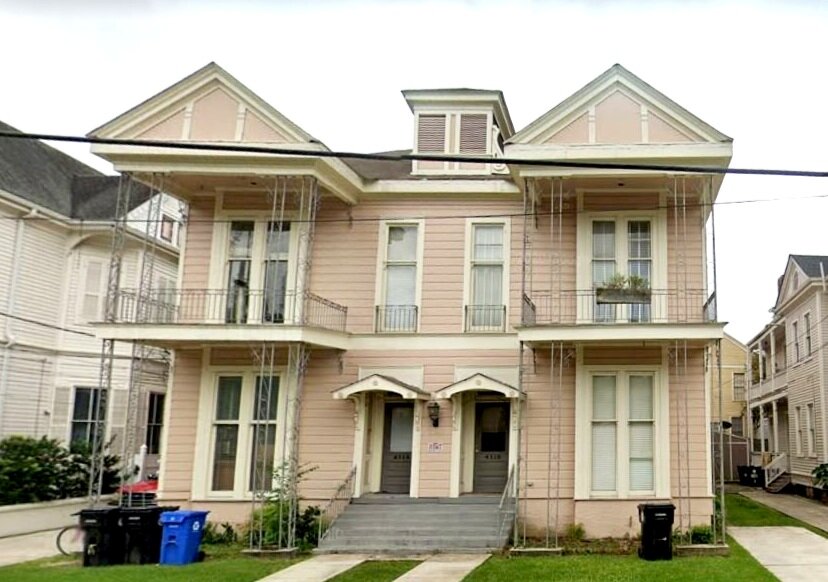Establishing "Multifamily" for the Better
What makes New Orleans neighborhoods so great is the same things that make neighborhoods great around the world: variety.
While most of the country was busy zoning their neighborhoods into single-use enclaves of uniformity, New Orleans, as it does, was busy ignoring national urban planning trends and standards. In this case, it was a good call.
As a result, we have retained our multi-use, finer-grained urban fabric of building use and type, and have reaped the benefits, being a top choice to live, work and vacation for humans in general.
An example of a New Orleans multi-family home blending with the context of the neighborhood. photo credit: google.com
image: thefifthestate.au.com
When an American in 2020 hears the term "multifamily," the first things that come to mind is probably either a large apartment complex, a luxury condo tower, or a run down slum, none of which anyone particularly wants as a neighbor. These multifamily options are often what developers are limited to, legally and practically, in the financial and governmental world we have created.
Older neighborhoods across the country have much more amenable low-density options that blend in seamlessly with their residential context, provide affordable housing close to jobs, and offer a great product for young people starting out and older people looking to downgrade. These are the 3- and 4- and 6- and 8- plexes of prewar construction that are today usually illegal to build in most neighborhoods, even those near urban cores. As new ones can't be built, and old ones either get flipped into mansions or destroyed by neglect, they are very much an endangered species.
We've written extensively on "missing middle" housing and the urgent problems it solves, and cities are starting to take note. In fact, the City of New Orleans has just taken a step that will open up a vast swath of properties that are already configured for just this type of housing that has been sitting fallow due to their inability to be legally brought back into use just because of their administrative classification as "multifamily" and the prejudice against that term.
If a building exists, set up with four apartments and four stoves, with four defunct power meters, why would you need to produce a utility bill from its occupation from six months ago to return it to service? Surely the neighbors would love an tech tycoon to scoop it up and restore it to a grandiose mansion for wintering, but there are only so many of those tycoons to go around. So it stays a rotting blighted structure, or is occupied illegally. This either/or is unnecessarily severe.
Multi-family along Prytania Street, photo credit: google.com
Multi-family along St.Charles Avenue, photo credit: google.com
Fortunately, the city council has passed, and official adoption next month awaits, for a lifting of the burdensome requirement that any structure set up for multifamily that has been vacant for 6-months prove via extensive recordation that it was indeed ever a multifamily structure. In a city where housing stock is still returning to use, and many records were obliterated, following the one of the most destructive weather disasters in history, one would be forgiven for thinking this administrative requirement was short-sighted and tone-deaf to the real needs of the city. This relaxation will open up opportunities for countless structures throughout New Orleans, allowing "multifamily" to be defined by appropriate, friendly neighborhood structures that integrate and contribute to the low-density residential urban fabric, while offering living space for a much greater variety of residents to enjoy.
And what's more American than relaxing regulations in the name of more market-provided choices for more people?




